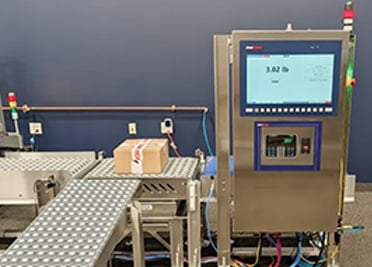Supply Chain leaders who are responsible for DCs continually seek to balance best practices with identifying the most impactful KPIs/metrics to drive productivity, cost optimization and service excellence.
The real value of metrics comes from analyzing the metrics output and driving a continuous improvement mindset throughout each workflow in the DC/warehouse.
We can point to almost any DC KPI and learn the Best in Class metrics that provide us a benchmark to measure against. The path to Best in Class is process of improvement where you are able to identify workflow pain points and develop a path that incorporates a combination of investment in technology and continuous improvement.
According the WERC “DC Measures 2018 Trends and Challenges1,” the following are a few of top KPIs that DC’s use in part to measure the Picking workflow:
Capacity/Quality Metrics
- Order Picking Accuracy (percent by order).
- This measures the accuracy of the order picking process against errors caught prior to shipment, such as during packaging.
- Orders picked correctly / Total orders picked
- Quintile performance metrics.
- Best-in-class. >= 99.9%
- 99.30%
- >= 99 and < 99.5%
- >= 98 and < 99%
- Inventory Count Accuracy by Location
- indicates that 10 units of part number XYZ are in slot B0029, the inventory count accuracy indicates how frequently one can go to that location and find that the physical count matches the system’s.
- The sum of the number of locations containing an error / The total number of locations counted
- Quintile performance metrics.
- Best-in-class. >= 99.88%
- 98.40%
- >= 97 and < 99%
- >= 90 and < 97%
- Average Warehouse Capacity Used
- The average amount of warehouse capacity used over a specific amount of time (month to month or yearly).
- Average capacity used / Average capacity available
- Quintile performance metrics.
- Best-in-class. >= 92%
- 85.00%
- >= 80 and < 85%
- >= 72.5 and < 80%
- Peak Warehouse Capacity Used.
- The amount of warehouse capacity used during designed peak seasons.
- Peak capacity used / Capacity available
- Quintile performance metrics.
- Best-in-class. >= 100%
- 95.00%
- >= 92 and < 95%
- >= 85 and < 92%
Outbound Metrics
- Lines Picked and Shipped per Hour
- Measures the productivity of picking and shipping operations in lines per person hour.
- Total order lines picked and shipped / Total hours worked in the picking and shipping operation
- Quintile performance metrics.
- Best-in-class. >= 92.8 per hour
- 35
- >= 26 and < 47.6
- >= 12 and < 26
- Orders Picked and Shipped per Hour
- Measures the productivity of picking and shipping operations in orders per person hour.
- Total orders picked / Total hours worked in the picking and shipping operation
- Quintile performance metrics.
- Best-in-class. >= 35 per hour
- 10
- >= 6.08 and < 15
- >= 2.76 and < 6.08
- On-Time Ready to Ship
- The percentage of orders ready for shipment at the planned time. “Ready for shipment” typically means that packaging and shipping documents are completed and ready for pickup.
- Number of orders ready for shipment on-time / Number of total orders shipped
- Quintile performance metrics.
- Best-in-class. >= 99.8%
- 99%
- >= 98 and < 99%
- >= 94 and < 98%
Inbound Metrics
- Dock-to-stock Cycle Time, in Hours.
- The dock-to-stock cycle time equals the time (typically measured in hours) required to put-away goods. The cycle time begins when goods arrive from the supplier and ends when those goods are put-away in the warehouse and recorded into the inventory management system
- For a given time period: sum of the cycle time in hours for all supplier receipts/Total number of supplier receipts
- Quintile performance metrics.
- Best-in-class. < 2 Hours
- 6.2
- >= 4 and < 8.096
- >= 8.096 and < 24
- Lines Received and Put Away per Hour
- Measures the productivity of receiving operations in lines processed and put away per person hour.
- Total lines received and put away/Total person hours worked in the receiving operation
- Quintile performance metrics.
- Best-in-class. >= 60 per Hour
- 22
- >= 20 and < 27
- >= 8.096 and < 24
Customer Metrics
- On-time Shipments
- The percentage of orders shipped at the planned time, meaning off the dock and in transit to final destination.
- Number of order shipped on-time/ Total number of orders shipped
- Quintile performance metrics.
- Best-in-class. >= 99.8%
- 98.20%%
- >= 97.56 and < 99%
- >= 94 and < 97.56%
- Total Order Cycle Time in Hours
- The average end-to-end time between order placement by the customer and order receipt by the customer.
- Excluding non-working days: sum of (Time order received by customer – Time order placed)/Total number of orders shipped
- Quintile performance metrics.
- Best-in-class. < 3.76 hours
- 16
- >= 9.8 and < 24
- >=24 and < 48
- Internal Order Cycle Time
- The average internal time between when the order was received from the customer and order shipment by the supplier. Order shipment is defined as off the dock, onto the shipping conveyance and ready for transit.
- Excluding non-working days: sum of (Time order shipment – Time order received from the customer) / Number of orders shipped
- Quintile performance metrics.
- Best-in-class. < 2 hours
- 8
- >= 5.88 and < 18
- >= 18 and < 35.2
Employee Metrics
- Overtime Hours to Total Hours
- Measures employee overtime against total hours, includes all hours scheduled (worked and any “paid time off” if included in normal calculation of total hours “worked” for the pay period).
- Hours charged to overtime/Total hours recorded (paid and worked)
- Quintile performance metrics.
- Best-in-class. < 2%
- 6.75%
- >= 5 and < 8.76%
- >= 8.76 and <14.98%
- Part-time Workforce to Total Workforce
- Measures the number of employees classified as Part-time against the total number of employees in workforce. This could also include employees that work full time hours for a short seasonal/peak period, but are classified as “Part-time”.
- Number of part-time classified employees/ Total number of employees
- Quintile performance metrics.
- Best-in-class. < 0%
- 1.00%
- >= 0 and < 4%
- >= 4 and < 20%
- Contract Employees to Total Workforce
- Measures the amount of non-employee’s (contracted, third-party agency temporary, contingent workers) used to support the business against the total head count in the workforce. These are the employees used to flex the workforce and support additional hours and could also be seasonal or used only part of the year.
- Number of Non-Employees (temporary – third-party agency – contractor – contingent workers)/Total number of workforce (employees + non employees)
- Quintile performance metrics.
- Best-in-class. < 0%
- 5.00%
- >= 0.52 and < 10%
- >= 10 and < 30%
Perfect Order Index Metrics
- Percent of Orders with On-time Delivery
- The percentage of orders that arrive at their destination at the agreed upon time. There are many definitions of “on-time,” and that the “time” may be a specific hour or day, or a window of time. “Agreed upon” means that the customer and shipper have agreed to the delivery time as a general commitment or as a part of the purchase order or contract.
- Number of orders delivered on time/Total number of orders shipped
- Quintile performance metrics.
- Best-in-class. >= 99%
- 95.20%
- >= 94 and < 97.3%
- >= 89.7 and < 94%
- Percent of Orders Shipped Complete
- Measures the percentage of orders which shipped completely, meaning that all line/units ship with the order per agreement between the customer and shipper.
- Number of orders shipped with all lines and units/Total number of orders shipped
- Quintile performance metrics.
- Best-in-class. >= 99%
- 95.20%
- >= 96.5 and < 98.64%
- >= 90.2 and < 96.5%
Achieve Better Outcomes with AbeTech
As a tool to help review and identify opportunities for improvement, DCs conduct what we at AbeTech refer to as DC Walkthrough for each workflow. This is a review/audit based on best practices that can yield clear and measurable actions to use and consider when planning for workflow improvement and investment.
Honeywell has extensive experience in successfully solving complex problems for a variety of e-commerce and omnichannel businesses. They are committed to solving your DC accuracy challenges through relentless innovation and a desire to deliver the best solutions. We provide access to the actionable insights and information you need to transform your business.
Our expert assessment teams will partner with you to understand your unique business requirements and identify where opportunities exist to optimize your workflows and increase efficiencies within today’s competitive retail climate.
Take your DC to the next level. Contact an AbeTech Solution Expert today!










